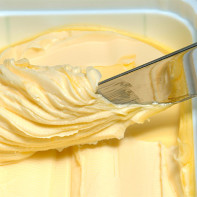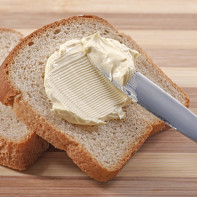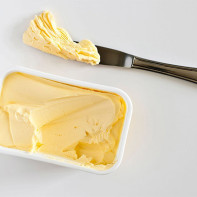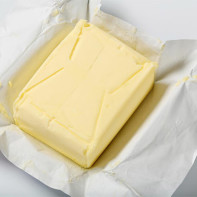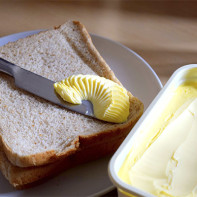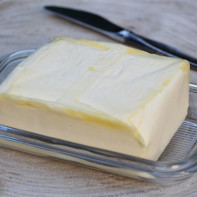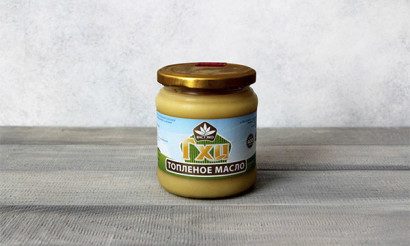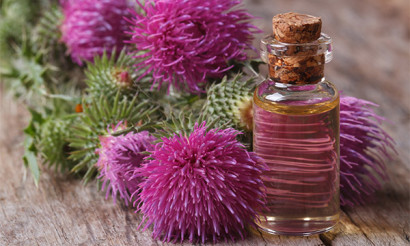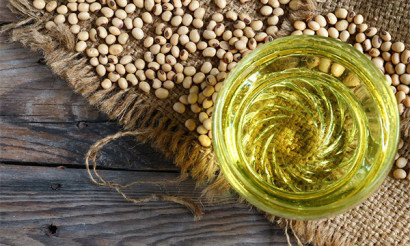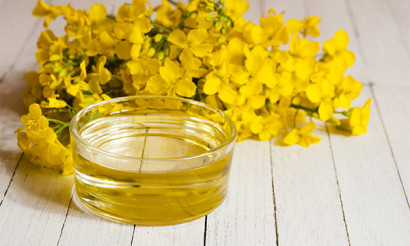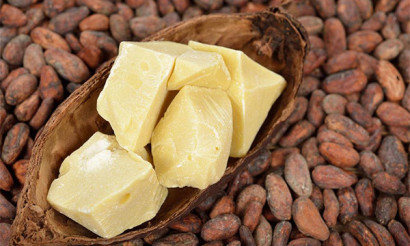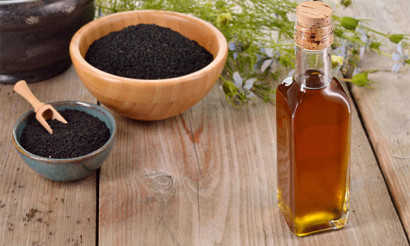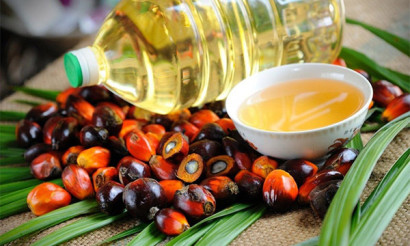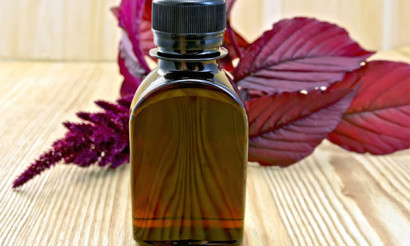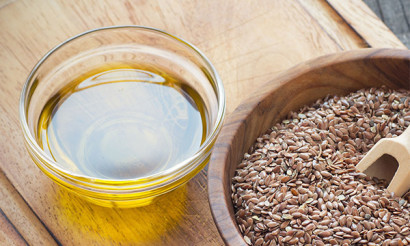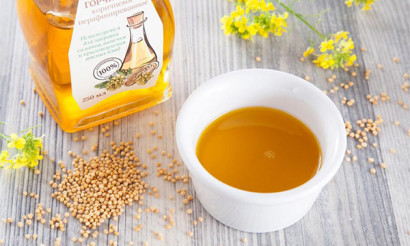Margarine: what is it made of, types, and useful properties.
Margarine is a product made with fats of vegetable and animal origin. It is considered a substitute for butter, is used in cooking at home and commercial enterprises.
- What is margarine
- What it is made of
- Types of margarine
- What is the difference between spread and margarine
- What is the difference between margarine and butter
- What is healthier: butter or margarine
- Composition and calories
- How to use margarine
- Margarine in medicine
- Harm and Contraindications
- How to Choose and Store Margarine
- Cooking Usage
- Can butter be substituted for margarine?
- Can I Fry on Margarine?
- How to Melt Margarine
- What You Can Make from Margarine
- Can I Use Margarine during Lent?
- Interesting Facts about Margarine
What is margarine
Margarine - a product in the manufacture of which one or more varieties of vegetable oil or animal fats are used. The water part in the composition of this product is emulsified. The ingredients may vary. It may contain solid and liquid dairy products, salt, etc. However, most recently, margarine is produced using refined vegetable oils and water.

Due to its versatility is one of the main ingredients in most types of baking.
What it is made of
A wide variety of oils and fats can be used in the manufacture of modern margarine, and salt, skimmed milk and emulsifiers are added. The components of vegetable and animal origin can have different melting temperatures. Also in the production of this product can be used salomas, which are solid fats of vegetable oils.
Salt, coloring components, aromatic additives and other substances that give margarine a hue, taste and desired texture are necessarily added to the composition of the product. As a vegetable component can be used such oils as sunflower, palm, olive, peanut, rapeseed and others. Very rarely cocoa butter is used. Also in the manufacture of margarine add sugar, vitamins, preservatives.
Types of margarine
According to the type of consistency, margarine is divided into the following types:
- Solid - a product that has a plastic and dense texture. Capable of maintaining its consistency at 20-degree temperatures. It is used in cooking, in the production of bakery products. It is used to make puff pastry. It is a component of soufflés, stuffing flour confectionery products.
- Soft margarine is characterized by a more plastic and soft consistency, holds its shape at a temperature of 10 degrees. It is used for spreading sandwiches, in home cooking.
- Liquid - a product with a homogeneous liquid consistency. Margarine of this type is used for frying and cooking home baking, in the catering sector.
What is the difference between spread and margarine
These two products have very similar flavors and have almost identical nutritional properties. The main difference between spread and margarine is the type of fat used.
Spread, like margarine, is an artificial substitute for butter, which uses natural vegetable oils and animal fats. These products are also made by emulsifying oil in water with the addition of flavorings, colorings, preservatives, and salt and sugar.
The main difference between spreads and margarine is that in the manufacture of the former GOST limits the use of vegetable and animal-based fats, as well as controls the content of trans-fats (not more than 8% of the total mass). Margarine, on the other hand, is characterized by a large amount of trans-fats (up to 40% of the total mass).
It is allowed to use dairy fats for making spreads of animal fats, and any fats for margarine. Sometimes even fish oil is found in the finished product. It usually contains oils such as sunflower, palm and soybean oils, and the amount of such components is strictly regulated and proportional to the content of milk fat. In its manufacture, vitamins A, D are added. Margarine is characterized by the use of cotton, sunflower and palm oil.
Compared with margarine, in the manufacture of spreads selected such an amount of ingredients that when chilled the product can easily be spread on a sandwich.
How margarine differs from butter
Today, butter and margarine are available in a wide range of products, and both products are very popular among the population. Despite using the products for the same purposes, they have very little in common. First of all, it is about the content of fats in the products of different origin.
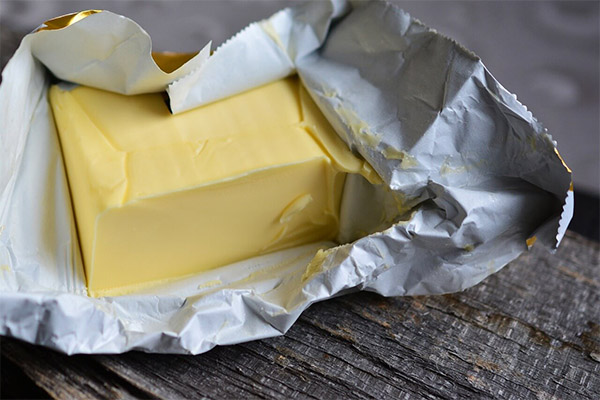
Butter uses animal fats to make it. The main ingredient in this case is milk or cream. Most often cow's milk is used, but sheep's milk or goat's milk products can also be used. The color of butter varies from white to yellow. This is not an indication of quality, the hue is only indicative of the milk that was used for production. If the butter package indicates that the product is sweet and creamy, it indicates that cream instead of milk was used in the making. Before whipping, the product is pasteurized, that is, heated to a certain temperature. This procedure allows you to extend the shelf life of the future product. Some countries do not allow butter that is not pasteurized to be offered for sale.
When whipping, the ingredient used acquires the consistency of a thick paste. During the process, air enters the butter, which makes the product lighter. Because of this, butter contains fewer calories than conventional animal fats.
If earlier animal fats were still used for the production of margarine and it was possible to say that it was a substitute for butter, today only vegetable fats are used for its creation. Some manufacturers add milk to their products, but only in small quantities.
As in butter, margarine must have at least 80% fat. There are products with less fat content. It is worth noting that the less fat in the product, the more water it contains.
Since margarine is based on vegetable oil, it does not contain cholesterol and saturated fats. At the same time, it has a high content of mono- and polyunsaturated fats.
Which is healthier: butter or margarine
Margarine is an alternative to butter. As already mentioned, for the manufacture of butter, animal fats are used, while margarine is characterized by the presence of vegetable fats, which become liquid at room temperature. In order for the vegetable oils in margarine to become thick, they are processed and hydrogenated. Although margarine has less saturated fat compared to butter, it is hydrogenated with trans fats. Trans-fats are chemically created substances that have similar properties to saturated fats. This makes margarine dense and lasts longer. However, such substances contribute to the reduction of good cholesterol, which leads to the risk of cardiovascular diseases.
When talking about which of these two products is better, one should consider not what is good for health, but what is less harmful to the body. In this case, the lesser "evil" is butter. Regardless of whether butter or margarine is better for each person, it is important to consume them in limited quantities.
Composition and calories
Margarine contains water, vegetable oils, flavorings, coloring agents, preservatives. In addition, it contains vitamins A, E, B2, as well as vitamin PP. Margarine in its composition has a number of trace elements such as phosphorus, potassium, magnesium and calcium. However, it should be remembered that all these substances are added to the product in an artificial way.
In terms of calories margarine is only slightly inferior to butter. So, it has 750 calories per 100 grams.
What is the use of margarine?
The usefulness of this product is directly related to what vegetable oils are used to make margarine, what processing they undergo.
Most varieties of margarine have many polyunsaturated fats in their composition. Their amount depends on the type of vegetable component. For example, if soybean oil is used for margarine production, the content of polyunsaturated fats will be about 20%. These elements are considered to be beneficial for the heart.
All vegetable oils contain stanols and sterols, which can reduce cholesterol levels. Omega-3 fatty acids are not produced by the human body, and their amount is replenished by the food we eat. These substances are found in some vegetable oils, such as soybean oil, rapeseed oil, and wheat germ. However, such components can be found only in margarine of expensive brands.
Margarine in medicine
Omega-3 fatty acids in some vegetable oils have a positive effect on the heart, making blood vessels more elastic. Also, these substances strengthen the bone system, protecting against the development of arthritis. With the help of omega-3 acids normalizes human mental health. In addition, these components can improve the condition of the skin, hair, and nails. Due to these fatty acids the healing process of wounds does not last long.
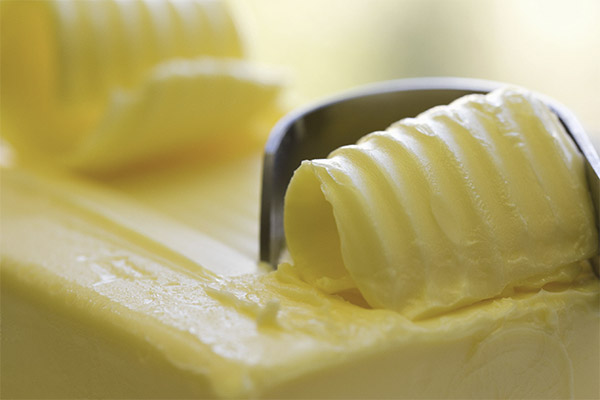
High quality margarine is made with olive oil, linseed oil or rapeseed oil. They are all characterized by antioxidant action, which can reduce blood pressure and improve blood circulation.
The useful properties of margarine, which have a beneficial effect on human health, depend on the quality of raw materials used in the production.
Harms and contraindications
Despite the fact that margarine contains useful substances, vitamins, according to most nutritionists, the product can cause harm to the human body. Margarine contains trans fats and various other chemicals. The artificial ingredients in margarine are not processed by the digestive system of the body. Therefore, regular consumption of such a product can contribute to metabolic disorders. Also as a result of using margarine lowers immunity, increases the risk of diabetes, cardiovascular disease and cancer.
Trans-fats have a negative impact on mother's milk, worsening its quality. Also due to the consumption of such trans-isomers of fatty acids babies are born underweight.
Prolonged and constant use of margarine in the diet leads to the fact that the quality of sperm in men decreases, decreases the production of the male hormone testosterone and increases the risk of infertility.
Not only fats and their acids in margarine harm human health. In addition, this product contains a number of preservatives and other substances that are not digested by the human body.
Margarine is contraindicated, first of all, to people who have intolerance to the product and its components. Contraindications also apply to diabetics, people suffering from obesity, heart disease. Scientists have proved that the daily use of 40 grams of margarine increases the risk of heart attack by 50 percent.
It is not recommended to consume the product for pregnant and lactating women, as well as children.
How to choose and store margarine
When choosing margarine, you should keep in mind that the low price indicates the use of low quality ingredients in the production. Look out for margarine packaged in foil rather than paper. Foil protects products from light, moisture and odors. It is necessary to choose products without aromatic additives and various emulsifiers. The color should be uniform over the entire surface of the piece, without spots. Depending on the additives, the shade of the margarine bar may also vary.
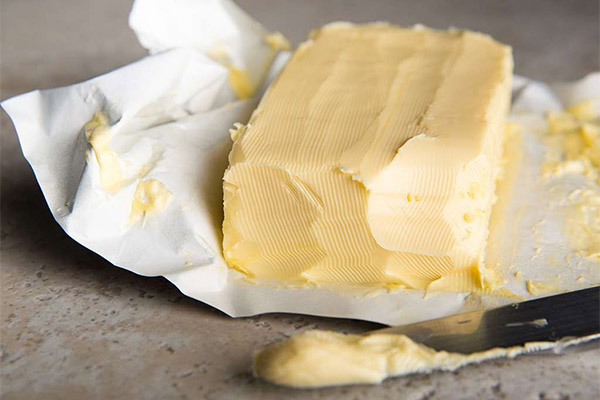
- So, if margarine is white, it is made without dyes.
- A light yellow hue indicates the presence of butter or dyes.
- A yellow color is an indication that dyes were used or there are vitamin additives in the composition.
- Margarine with an uneven color - the product was not cooled properly and stored without observing temperature standards.
It is also necessary to consider the date of manufacture and shelf life of the product. The product should be kept in the refrigerator for a month at 0-4 degrees, about two months at 10-20 degrees below zero. If the product has a sour taste or a taste of metal, you should get rid of it.
Cooking Applications
Margarine is most often used for baking, it is used for cooking cookies, cakes. It gives a beautiful appearance of the finished product and improves its taste, makes baked goods puffy, with a pleasant aroma. Also, when using margarine in cooking increases the shelf life of the finished product.
There are types of margarine, which can be used for puff pastry, for simple baking. It is usually indicated on the packaging of the product.
Margarine is also used to make creams. The product is added to soups and various side dishes.
Can butter be replaced by margarine
Although margarine is an alternative to butter, their composition is very different. Cream or milk is used to make butter, while vegetable oils are used for margarine. In some cases, substitution is possible.
For example, margarine helps the dough to "rise" faster, and baked goods using this product stay puffy longer. If we are talking about creams, it is better to use delicious butter without fragrance. And use margarine in those cases where it is prescribed in the recipe.
Can I use margarine for frying?
You can fry with any oil, including margarine. For its manufacture, vegetable oils are used. However, in some brands of the product are added chemicals to improve the taste. Some components in margarine can burn out when fried, forming a sticky mass. This sticky and sticky mixture affects the taste of the product. It is possible to eat such food, but it is not very useful. It is recommended to cook food with natural oils.
How to Melt Margarine
You can melt margarine using the microwave oven. To melt a 200g piece, simply place it in a dish and immerse it in the microwave for 2-3 minutes at the lowest power. This will allow the product to melt evenly.
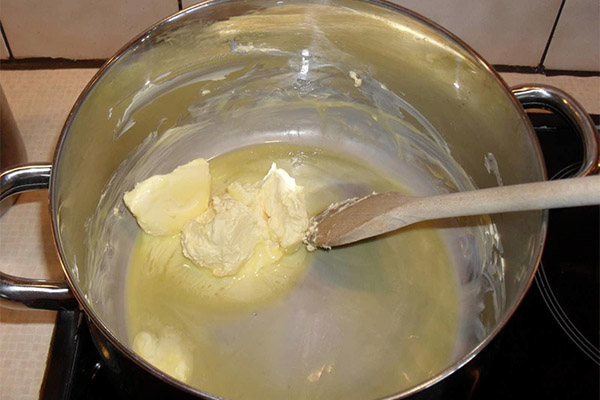
You can melt margarine in a water bath. It will take about ten minutes to melt.
What you can make with margarine
- Waffle rolls. To make waffle tubes you need to melt 250 grams of margarine. In a bowl, beat 4 eggs, just scramble them, without beating them. Then add 200 grams of sugar and 20 grams of vanilla sugar and mix everything. Add the melted margarine to this mixture and mix thoroughly. After that, add 180 grams of flour and stir to form a homogeneous dough. Next, extinguish 0.5 tsp. of soda with 1 tsp. of vinegar and add to the dough, which should be stirred properly. Warmed form lightly grease with vegetable oil only once. Place a tablespoon of batter in the middle of the mold, cover the waffle iron. After 30 seconds, take out the waffles, which should be rolled into a tube.
- Dough for pizza. You can make margarine dough for pizza. For this purpose, 200 grams of margarine should be ground on a grater and placed in a deep bowl. Then add a tablespoon of sugar and one egg and mix everything thoroughly. Now add 0.5 teaspoons of soda put out with vinegar and 300 grams of flour. It remains to knead the dough and bake the pizza.
Can we use margarine during Lent?
As you know, vegetable oils are used to prepare margarine. In this case, its use during Lent is allowed. However, some manufacturers add to their products components of animal origin. And the use of animal fat during Lent is prohibited. Therefore, before buying it, you should study the composition of margarine.
Interesting facts about margarine
- Natural margarine has a white color. If margarine has a yellow tint, it indicates that dyes have been added to it.
- Margarine got its name back in the early 19th century, when a French chemist discovered the so-called "margarine" acid, which was translated from Greek as "pearl". However, that substance and the modern product have nothing in common.
- In the mid-19th century, the Emperor of France, Napoleon III, promised a large reward to the scientist who would create a substitute oil for the army. Then one of the scientists was able to figure out how to turn vegetable fats into a solid product. As a result, the rations of French soldiers included such a product as "oleomargarine." To make it, water was evaporated from vegetable oils. However, American businessmen patented the new product at the end of the century. But many American states prohibited the sale of margarine, such a restriction is in force today. This is due to the fact that the dairy industry rejected the creation of an alternative to butter.
«Important: All information on this site is provided for informational purposes only. for informational purposes only. Please consult with your health care professional before using any of the recommendations. specialist before using any of the recommendations. Neither the editors nor the authors shall be liable for any possible harm caused by materials."

